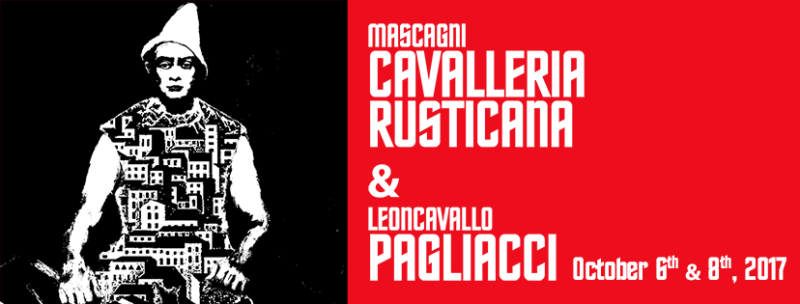
This Friday (Oct. 6), the New Orleans Opera Association will launch its 75th season with an exciting schedule of performances that celebrate the great works of past composers, as well as the art form’s most modern iterations. Dr. Baty Landis, the association’s Director of External Affairs, says they also hope to bring their passion for the art form to the entire New Orleans community.
“We know at New Orleans Opera that operas [are] for everyone and what we’re trying to do this season is make sure that everybody in the city has an opportunity to come…whether it’s within the Mahalia Jackson Theater, a smaller venue, or a school or community center,“ says Landis, who hopes this season will rally against the often held notion that opera is elitist. “Our theme for this season is actually ‘Opera Connects’ and the opera as an art form really magically connects all of these different mediums artistic mediums. And we believe that by extension opera can connect all of us.”
The city’s fascination with the medium runs deep. “New Orleans [has] always been a big art city and opera— as a grand and dramatic, multimedia art form— was appealing in the very early years of the city,” Landis says, adding that since 1796 there has been at least one opera performed in the city each year (with only a couple of exceptions). In fact, New Orleans was the first city in the United States to stage an opera, though no exact date is known for when it began the practice. After a century filled with opera house fires, the Civil War, and sporadic bouts of homegrown opera troupes taking the stage, New Orleans entered the 20th Century with mostly national touring companies continuing the tradition.
That changed in the early 1940’s. “There was a group of music enthusiasts in the city who decided to establish a permanent opera company in the city once again…and the New Orleans Opera Association was that company,” Landis says. According to the association’s website, their debut in 1943 began with, “…an inaugural summer season of open air performances, billed as ‘Opera Under the Stars’, in City Park stadium.” The inaugural performance was a double billing of Mascagni’s Sicilian melodrama, Cavalleria rusticana and everyone’s favorite clown-driven-into-madness-and-murder story, Leoncavallo’s Pagliacci.
In honor of the 75th anniversary of the association, they will start their season with these two operas, followed with an eclectic mix of old and new works. They’ll continue with Jacques Offenbach’s comic Orpheus in the Underworld, a hysterical look at the Orpheus myth and late 19th century French culture best known in popular culture for a step it features that eventually became known as the “Can-Can” dance after it was popularized at the Moulin Rouge in Paris..
This will be followed by a performance at the Le Petit Théâtre du Vieux Carré of George Whitefield Chadwick’s musical romp Tabasco about the creation of Tabasco sauce.
“The centerpiece of our season is an opera by Terence Blanchard [called] Champion,” says Landis, a work from 2013 by Blanchard— the six-time Grammy winning New Orleans jazz musician and composer— about world champion welterweight boxer Emile Griffith. The complex story, “…retraces [Griffith’s] steps to success and failure in love, life, and sport, as a champion and a gay man in the 1960s,” according to the association’s website. “So it is really a tragic story, but it brings together jazz and opera— which are two such strong strains in the music history of New Orleans— so we’re especially excited about that piece,” Landis says.
“Opera is not at all an old, dead art— as some people might say. Opera’s a living art that really inspires a lot of modern composers,” Landis adds, “Terence Blanchard has a very successful jazz background, but he clearly regarded opera as a special…and rewarding challenge. And bringing together jazz and classical music is something that is that really informs this piece, Champion. There are a lot of different approaches to how you can address this medium.”
The season will wrap up with a 75th anniversary gala performance featuring a kind of “greatest hits” of opera such as works from George Gershwin’s Porgy and Bess and a final main stage performance of Menotti’s Medium about a seer who is exposed as a charlatan.
More information about The New Orleans Opera Association and their upcoming season can be found at www.neworleansopera.org.
 NOLAbeings Multimedia artist Claire Bangser created NOLAbeings as a portrait-based story project that marries...
NOLAbeings Multimedia artist Claire Bangser created NOLAbeings as a portrait-based story project that marries...  Voodoo in New Orleans: Reviving history: New Orleans fortune telling This article takes a deep dive into the history of Voodoo in New Orleans, its hybridization with Catholicism, and its present-day place in the city's culture. The author visits fortune-tellers in the French Quarter, using their guidance as a tool for introspection rather than a deterministic predictor of the future. Through her experiences in New Orleans, the author feels a mystical connection to both the past and the future.
Voodoo in New Orleans: Reviving history: New Orleans fortune telling This article takes a deep dive into the history of Voodoo in New Orleans, its hybridization with Catholicism, and its present-day place in the city's culture. The author visits fortune-tellers in the French Quarter, using their guidance as a tool for introspection rather than a deterministic predictor of the future. Through her experiences in New Orleans, the author feels a mystical connection to both the past and the future. 